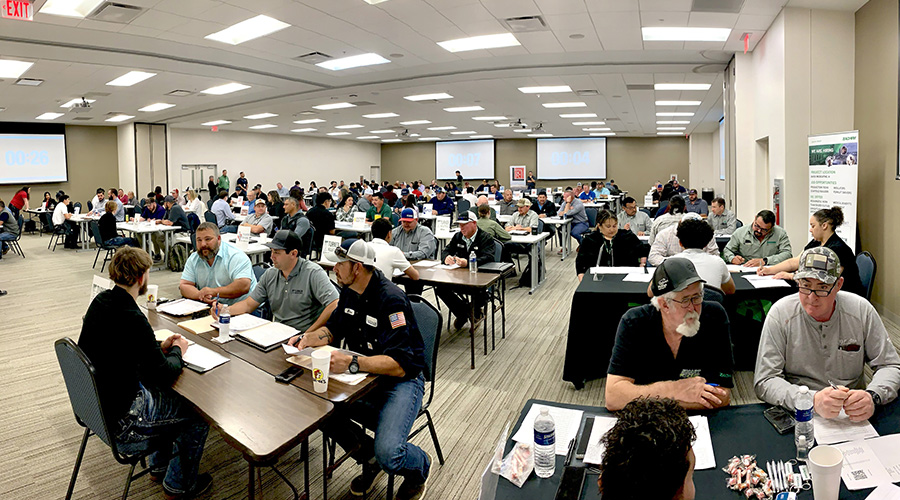The First 100 Days as a Facility Manager: What You Need to Know
New leaders should follow these six steps for success.
By Stormy Friday, Contributing Writer
Whether a facility manager has been promoted or hired externally to lead the department, the first 100 days are a critical period. During this time, the manager will set the tone for his or her leadership and determine how the team will operate.
Years before the pandemic I made a presentation on this topic at the NFMT conference. It resonated with those in the audience who were new facility managers and they asked thoughtful questions about how to implement the actions I described.
Moving forward to 2023, our industry has been in turmoil as companies and institutions struggle to determine what the world of work should look like as the dust settles from the aftermath of the pandemic. Senior executives around the globe are valiantly assessing whether the four-day work week makes sense for their industry, if the hybrid work model can sustain mission goals and objectives, and if the millions of square feet of unoccupied and underutilized real estate should remain on the company books.
For new facility managers, this complex environment presents both challenges and opportunities. As guidance for emerging facility managers, I turned to the action plan I outlined in 2018 to determine its relevance and see if any of the components needed to be removed or altered to accommodate current conditions. While it is difficult to condense the salient points from an hour-long presentation, I have distilled the essential elements of an action plan into six components for a facility manager’s first 100 days action plan.
1.) Do Your Due Diligence
Regardless of whether you have been a member of the organization you are about to lead or became the leader as an external hire, your first most important action item is to do your homework before stepping into the manager’s role.
Now more than ever before, when new facility managers take the reigns of the organization it is essential for them to study the corporate environment and the organization to have a clear picture of what they are inheriting. If this element is overlooked, new facility managers may find they have set themselves up for failure.
Start by answering a series of questions.
The first group of questions addresses where the company is headed. Has the company changed its strategic direction and what impact does it have on facility management service delivery? Is the company rethinking its product or service lines, with an eye towards a smaller, more tailored menu? Is senior management considering a merger or an acquisition as a potential strategy? Answers to these questions may impact the facility management mandate, the organization configuration and the skills mix needed to deliver quality services.
The next group is about the mandate. This is the main question for the facility management profession overall. Is the expectation from senior management that your department will be a strategic player as decisions about the corporate future unfold or is the mission of the organization now focused on operations and maintenance of the portfolio with little involvement in senior decision making? Is the facility manager’s role to be a change agent for the organization or a caretaker for an already high-performing organization that has continued to out-perform even during the pandemic and post-pandemic phases?
The third array of questions is associated with the corporate work model. For example, is there a firm direction company-wide on a hybrid model, four-day work week, tracking employees to ensure they are in their offices or some other work solution? Similarly, has a corporate policy regarding Fridays been established? According to a recent Wall Street Journal article companies now find Fridays are “floating in no man’s land” because they may not be a regular workday anymore but aren’t quite a weekend day. This conflict creates a whole new set of workplace demands. Facility managers need to determine what senior management has concluded about the workweek. An ever-changing number of employees working in office or remote makes it difficult for the facility management team to plan their schedules and staffing.
2. Build a Strong Team
The burning imperative — aka what the team must do to achieve success — drives the organization. It requires the facility manager to establish a clear and articulate definition of what constitutes the burning imperative that is shared and communicated both internally and externally. This statement of the organization’s focus is a pre-requisite for a continuous learning culture. It embodies the principle of full disclosure to the team about changes in corporate direction or other issues that impact service delivery. A team that is sheltered from the realities associated with the company’s business loses the ability to react quickly and shift gears when the corporate business direction changes.
To support the imperative, new facility managers need to build a strong team that sustains the organization into the future and becomes the facility management legacy for the company. This component of the 100-day action plan is more difficult now than it used to be. The rules of engagement have changed over the past four years and the concept of team building has taken on a new meaning. Many organizations have teams that rarely interact on an in-office level and the team culture is not highly institutionalized.
Surprisingly, a new facility manager may have an advantage over new managers in other corporate departments. Unlike their counterparts during the pandemic many facility departments did not have the luxury or opportunity of having staff working remotely on a regular basis. While the team culture may need strengthening or tweaking, it may not be as fragmented as some of the other organizational entities.
3. Assess Skills and Close the Gaps
Matching what the facility management organization has in the way of staff skills and what the organization needs to meet senior management expectations is the task of the new facility manager.
To do this, new facility managers need to assess the skills current staff have and link them with the needs of the company to create a road map for closing gaps that exist between the two.
After the new manager completes this assessment, a developmental Human Resources plan should be created and shared with the organization. The plan should include strategic goals and implementation steps for organic development of existing staff to close skills gaps, strategies for long-term recruitment and hiring of new staff to complement existing in-house staff skills, and strategies for initiating or strengthening relationships with external service providers.
4. Create and Manage Milestones
Mapping and tracking how individuals and the organization overall are performing against designated milestones to hold them accountable has not changed as an essential element in the 100-day plan for a new facility manager. Creating the burning imperative is an action-oriented activity that relates to specific action plans that are populated with steps to achieve them, timelines, and decision parameters to guide them, and measures to evaluate performance success. Managing this process is critical for the new facility manager.
What has changed is how the facility manager should view the action items and milestones. Now that companies are creating more flexible work environments the secret to this element is focusing on outcomes rather than inputs. That means creating an atmosphere of trust for facility staff to ensure they are not judged by how much time and effort they put into task accomplishment but how well the outcome or product works and is received.
Facility staff needs to have feedback on a regular basis as a barometer to measure progress against goals. Whether the new facility manager meets with teams in person, via teleconference, or has phone calls, regular reinforcement of expectations is necessary to strengthen the relationship between staff members and how their work furthers the achievement of the overall goals.
5. Fix What Isn’t Working
Sometimes even the best of plans just does not work and one of the biggest mistakes new facility managers make is to pretend everything is working and forge ahead with a flawed plan. Acknowledging that a plan is defective in whole or in part is not a sign of a weak manager but rather a strong one.
To illustrate this point, suppose a baseball manager was managing a team in an important play-off series and the pitcher was not performing well. The manager wouldn’t keep him in the game just because that was the original plan. He would change pitchers to fix the problem. The same is true if a facility management plan fails. Changing direction before disastrous results occur is an important move for new facility managers.
The key is to pull the staff together, admit there is a problem with the plan, solicit input on potential solutions and act quickly and decisively to alter the plan. In a facility management organization under new leadership, the facility manager must be cognizant of the fact that staff may be afraid of speaking out for fear of being judged as disgruntled or incompetent.
It is important for new managers to create a psychological safety zone, so staff feel comfortable discussing real mistakes associated with a plan that isn’t working. This safety zone has a positive impact on staff performance. A recent “Wall Street Journal” article reported on a study conducted by Google to determine what changes in the new work environment were having the greatest impact. Staff reported the management focus on team psychological safety was a prime contributor to the organization’s success.
6. Solicit Frequent Feedback from Your Boss
One of the negative residuals from the pandemic facility managers often discuss is the feeling of disconnectedness from senior management. Since so many corporate executives now participate in flexible work schedules, facility managers often feel their ability to access their bosses is more limited. Before the pandemic, senior executives were in-house on a regular basis, which made it easier for facility managers to establish more frequent contact with them.
New facility managers must work harder at this access and from day one on the job they need to establish a precedent for spending time with their bosses. The “what I did in school today” approach applies to facility managers who need one-on-one interaction with their bosses. Having access to senior management is the life blood for a successful facility manager.
From the first day new facility managers must have a review meeting, even if the boss does not schedule one. A precedent needs to be established for how the manager will be updated on a regular basis, what method will be used to obtain current information on corporate direction and strategic initiatives, and the most appropriate means to maintain an information flow on performance expectations and issues.
These six steps are a lot to cover in the first 100 days, but they are crucial for creating lasting success in the department. New facility managers must begin on day one to lay the groundwork for their leadership.
Stormy Friday is founder and president of The Friday Group, an international facilities services consulting firm. She is a member of the ProFMI Commission, a governance body that serves as an advisory committee for the Professional Facility Management Institute's (ProFMI) activities.
Related Topics:











